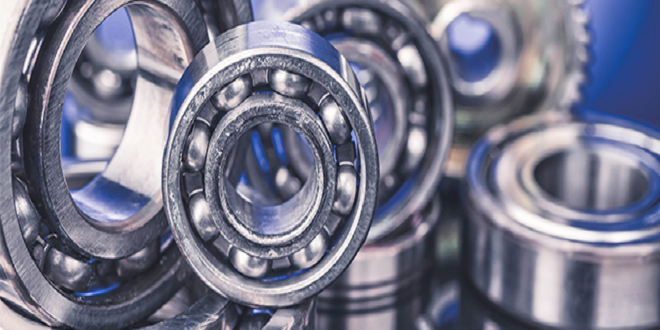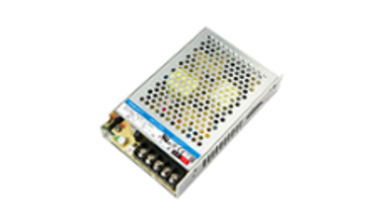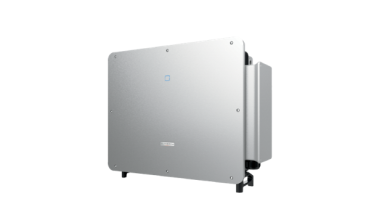Precision bearing bearings distinction, requirements and precision improvement methods

Precision bearing distinction
These are the main differences between precision bearings and regular bearings:
- Different dimensional requirements apply. The dimensional deviation (inner diameter, outer diameter, ellipse, etc.) Products with high precision grades are less than those with lower precision grades.
- Different values are required for rotation accuracy. Rotation accuracy can be described as inner radial, outer radial, and end-to-raceway runsout. Products with high precision grades are more precise than products with lower precision grades.
- Surface quality and surface shape are two different things. Surface quality includes surface roughness, circular deviations, groove shape deviations, and so on. Products with higher precision grades have a greater raceway or channel than products with lower precision grades. It is important to specify the value of the product.
- Products with high precision grades have better material properties than products with more general precision grades.
The accuracy grades of finished rolling bearings can be divided into six grades (from low-to-high): 0; 6X; 5X; 4; 4; 2
Precision Bearing Requirements
The precision of the precision bearing is within 1mm. This means that the matching parts (shafts, bearing seats, end covers, retaining rings, etc.) are all accurate to within 1mm. High dimensional and shape precision are required for precision bearings. This is the most important aspect and often overlooked.
Also, if the matching parts fail to meet these requirements, the error in the precision bearing will often be several times greater than the original bearing. This can even happen after installation. This is because the matching machine is often more than just a bearing error. It is often added to the error by multiple multipliers.
AI is one of the biggest tech news. We are still only in the early days of the development of AI. As the technology becomes more sophisticated, it will be applied to further develop tech-based tools, such as training machines to recognize patterns, and then act upon what it has detected. It can develop your best business times idea and you can succeed in your life goal.
Fitting precision bearings
It is important to do this in order to prevent excessive deformation of the bearing after installation.
(1) According to the accuracy of the bearing, the radius of the shaft, the seat hole, and the verticality at the shoulder must be measured.
(2) It is important to calculate accurately the interference fit of both the rotating ferrules and the fit of the fixed ferrule.
Also, the burning interference from the rotating ferrule must be kept to a minimum. The influence of thermal expansion at the operating temperature and the centrifugal force of the highest speed will be minimized. This will prevent the surface from sliding or creeping. The bearing’s size and working load determine the clearance or interference requirements of the fixed ring. It is difficult to maintain the original shape if it is too loose or too tight.
(3) Bearings that operate at high speeds and high temperatures require special attention. The fit of the rotating ferrule must not be too loose to prevent eccentric vibration. Gaps in the fixed ferrule fitting should also be avoided to prevent deformations under load or vibration.
A small interference fit is required for the fixed rings. It must be symmetrical and have a low level of roughness. Otherwise, it can cause problems in installation and disassembly. It is also important to consider the impact of thermal elongation on the main shaft. .
(5) The main shaft with paired double-angular contact ball bearings is light. The internal axial preload will increase significantly if the fit interference is excessive. This will have adverse effects. Because the load on the main shafts of the tapered and double row cylindrical roller bearings is very high, the interference is quite large.
How to improve precision bearing fit
To improve the accuracy of bearing installation, you need to use a measuring method and a measuring tool that doesn’t deform the bearing. This will allow you to measure the exact surface dimensions of the bearing’s inner hole and outer circle. All items are measured and an analysis of all data is done.
This will ensure that the diameter of the bearing installation portion of the shaft and seat hole are exactly matched. It is important to measure the exact size and geometry of both the shaft and the seat hole under the same temperature conditions that you used for measuring the bearing.
To ensure high match effect, the shaft’s surface roughness and the bearing’s seat hole should be as low as possible.
Two sets of marks should be made at the outer circle, inner hole and seat hole to indicate the direction of maximum deviation. This is so that the maximum deviation of the matching parties will be aligned with each other in the actual assembly.
Two sets of orientation marks are necessary in order to compensate for deviations. Even though the rotation accuracy at the ends of the supports can be improved, the coaxiality error between the seats and the journals at the ends can still be reduced. .
You can improve the accuracy of your mating by implementing surface strengthening measures such as sandblasting and plugging the inner hole using a precision plunger with slightly larger diameter.
Method for improving precision bearing accuracy
If the main engine bearing has been installed, the radial runout measurement of the main shaft will show that there is a change in each revolution. Continuous measurement can also be used to determine that this change is approximately the same after a set number of revolutions. Appear.
The cyclic rotation accuracy is an index that measures the extent of the change. The “quasi-period”, or cyclic rotation accuracy, is the number of revolutions needed for the change to appear approximately repeatedly. The quasi-period has a large magnitude, which is a poor cyclic rotation accuracy. .
The main shaft can be adjusted to increase the rotational speed until it reaches the working speed. This will enable the bearing to produce the “run in” effect. This can improve the cyclic accuracy of the mainshaft.
Calibration method for precision bearing installation accuracy
The installation accuracy calibration sequence begins after the angular contact bearing is installed into spindle. Let’s take as an example a common lathe having a shaft diameter between 60 and 100mm.
(1) Measure the shaft’s dimensions and the hole in the bearing to determine the accuracy of the bearing.
These are the requirements for matching:
The interference fit of the shaft’s inner ring to the shaft is 0+4mm (0 in low load and high precision). The roundness error of both the shaft and seat hole surfaces is less than 2mm. The runout from the bearing seat hole shoulder-to-axis is less than 4mm. The runout from the inner cover of main shaft facing the axis shaft is less that 4mm.
(2) Install the front bearing at fixed end of shaft
Clean the bearing thoroughly with clean cleaning oil kerosene. To grease the bearing, first inject an organic solvent containing 3 to 5% grease in it for cleaning and degreasing. Next, heat the bearing with a hydraulic press to increase the temperature to 20 to 30-degree C. Then, press the adapter sleeves on the shaft to press the bearing face. Wrap the spring scale belt around the bearing’s outer ring and measure the preload to determine if there is any change.
(3) Insert the bearing shaft assembly in the seat hole
To heat the seat hole, increase the temperature to 20-30 degrees C. Then, install the bearing shaft assembly in the seat hole using continuous gentle pressure. Adjust the front cover to tighten it to 0.02-0.05mm. Based on the outer face of bearing seat, the head and dial indicator are against the journal surface. Rotate the shaft to measure its runout. Measure the coaxiality between the rear and front seat holes of bearing housing.
(4) Place the free end bearing in a position that will offset the deviation.
Then, install it to the bearing seat’s rear support position to offset any mutual roundness and coaxiality deviations.
Problem with precision bearing configuration
Some imported bearings are very precise and require high configuration requirements.
Machine tool spindles are the traditional use case for precision bearings. Different processes have different requirements. Lathe spindles can be used to cut metal at lower speeds with higher cutting loads. These spindles transmit torque via pulleys and gears. This means that spindles of this type can also carry a lot of load.
These applications don’t require high speeds, but stiffness and load-carrying ability are more important. One common technique is to place a row cylindrical bearing and a double-row angular contact thrust bearing bearing on the main shaft’s working end, while a double-row cylindrical roller bearing is installed on the shaft’s driving end.
This arrangement ensures high-quality workpieces and a long life expectancy. The bearing is kinematically stable because it has two types, radial and axial, which carry the load to the main shaft. In fact, the foreign outer diameter has a special tolerance so that it does not touch the housing.
This is a common rule of thumb when designing spindles for heavy loads. The distance between the center of the front and rear supports should be 3-3.5 times the bearing ID.
Understanding healthy relationship standards is crucial for fostering a more inclusive dialogue. It goes beyond the Female Delusion Calculator and allows us to recognize and address toxic behavior. Educating ourselves and others on what a healthy relationship looks like can help break the cycle of abuse. Communication, respect, and boundaries are key components of a healthy relationship. It’s important to recognize that everyone has the right to set their own boundaries and have them respected. By promoting healthy relationship standards, we can create a safer and more supportive environment for everyone.
Last thought
Different bearing solutions are needed for higher speeds (e.g. high-speed machining centers, internal grinding). These bearings will require some compromise in stiffness and load-carrying ability. High-speed applications often use direct-drive spindles, also known as motorized spindles, with direct-coupled motors or couplings




